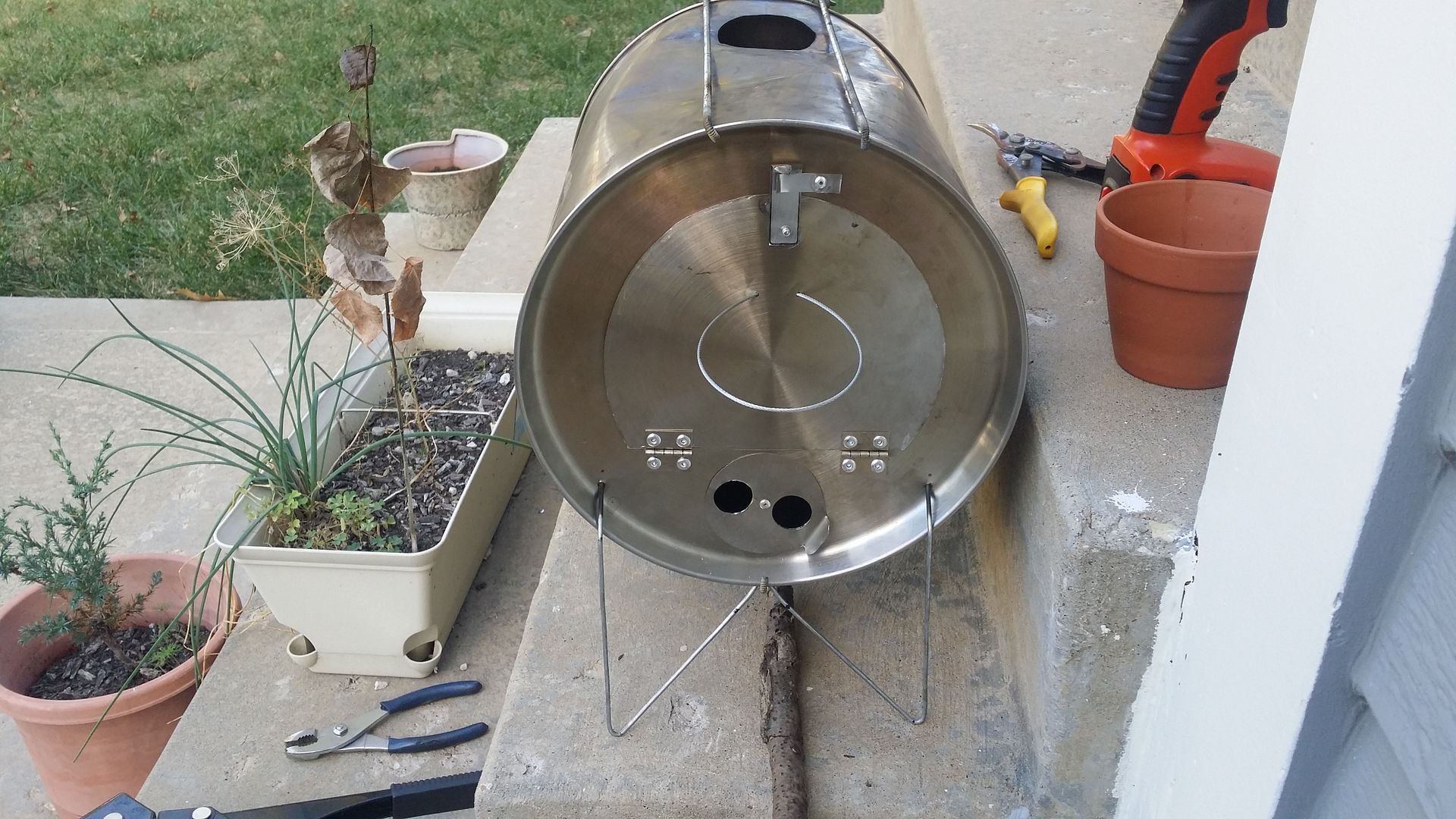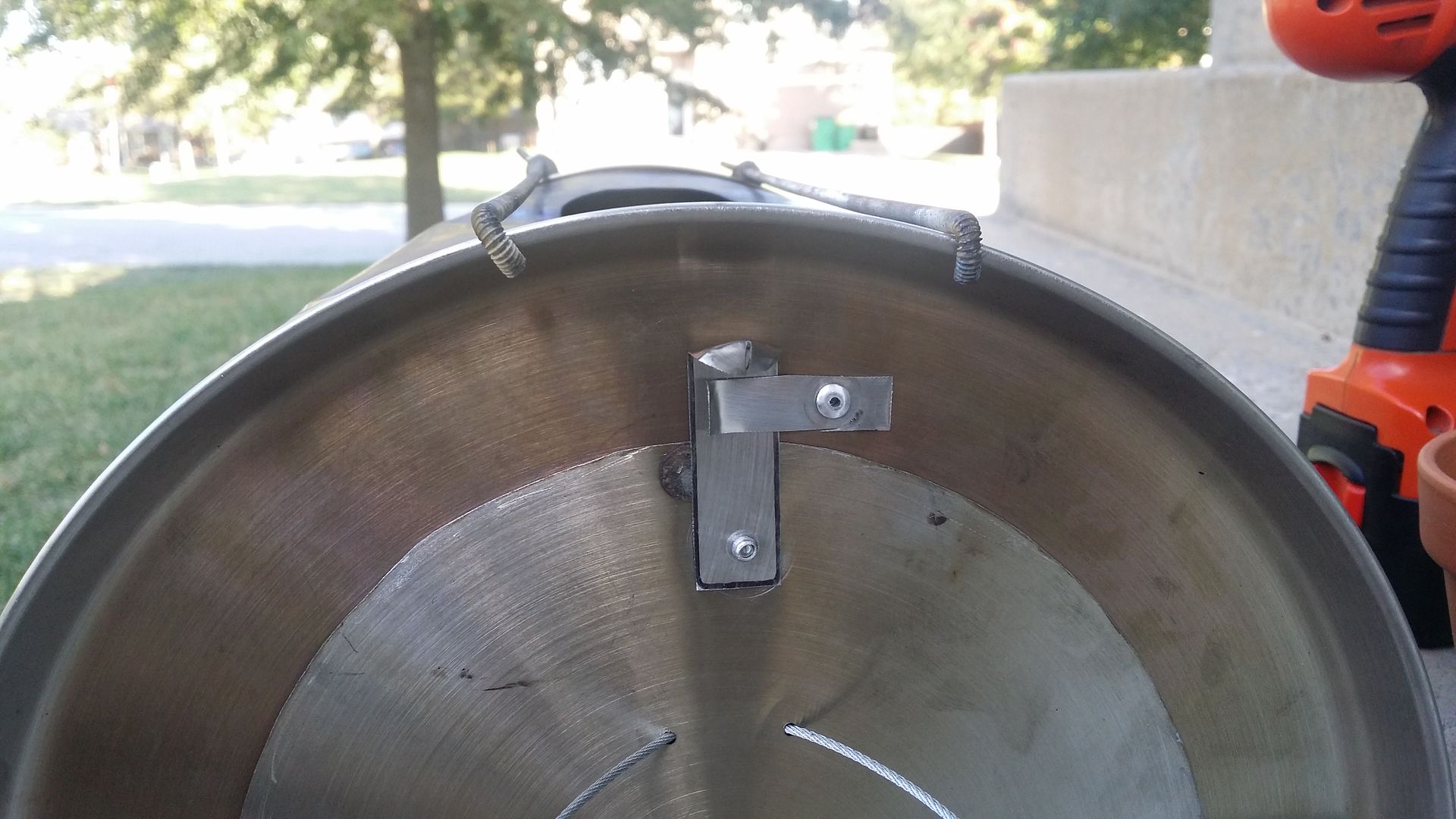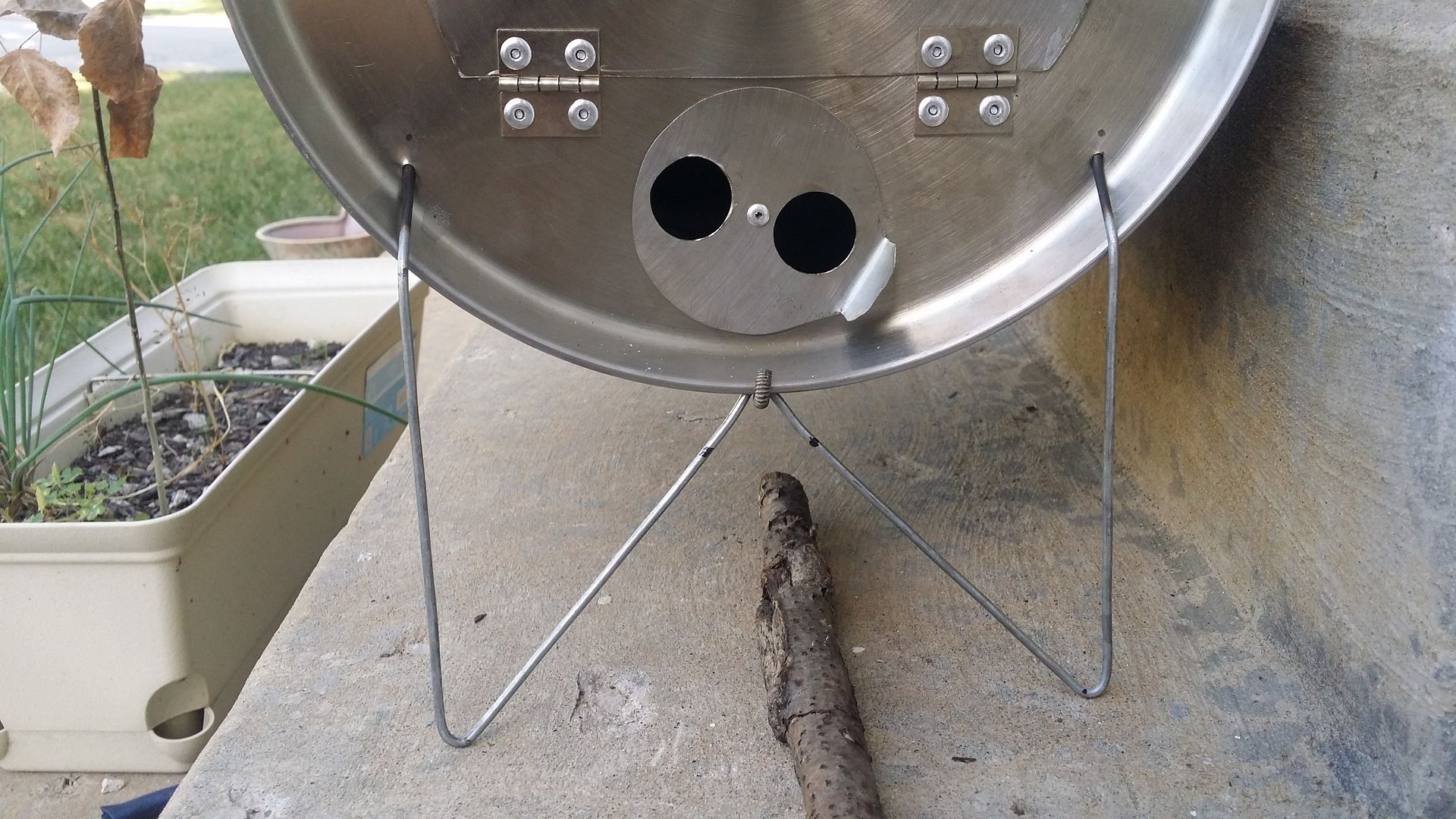Not for meWeird. Do the links work?
Navigation
Install the app
How to install the app on iOS
Follow along with the video below to see how to install our site as a web app on your home screen.
Note: This feature may not be available in some browsers.
More options
Style variation
You are using an out of date browser. It may not display this or other websites correctly.
You should upgrade or use an alternative browser.
You should upgrade or use an alternative browser.
Another DIY Stove
- Thread starter bbrown
- Start date
That worked
bbrown
WKR
Pics worked for me... What do you mean the leg came loose - was it not hooked by the bottom support? I liked the thicker wire because it seemed much more stable/solid.
Well, if you look at the photo, I have it clipped like you suggested. However, at some point that little clip worked itself off the leg where it was holding. It could have easily been from me messing with stuff. The thinner legs were plenty stable enough regarding the weight of the stove and all of that.
Photos should be fixed now.
Photos should be fixed now.
bbrown
WKR
That makes sense - I thought maybe I cut the end of it too short and it worked its way out or something.
ndbwhunter
WKR
What have you found to be the best way for cutting out the door pieces? I tried using the metal blade on my dewalt oscillating tool and it just chewed the plates up. I managed to get the door cut out, but it doesn't look pretty.
Grinder with a cut-off wheel, or will a tin snips get the job done?
Grinder with a cut-off wheel, or will a tin snips get the job done?
I used tin snips with no problems
ndbwhunter
WKR
Thanks, guys. I was just worried that I wouldn't get a good clean cut.
bbrown
WKR
I used a dremel with a cut off wheel then used a polishing stone to round off the sharp edge.
bbrown
WKR
It's the wire used to suspend grid ceilings or acoustical grid ceilings (I work in construction). I'm using "#9" wire which is a bit thicker and I sent both #9 and #12 wire to colonel00. You should be able to find it at Home Depot by the ceiling grid section which should be close to the drywall.
As far as bending it, I used a pair of lineman's plyers and it was basically a bunch of guess and checking. I can measure the distances between bends but it may vary depending on your stove size.
Hopefully this makes sense but bending them so they go into the face and basically lever again the stove plates and holding them with the lower stove body support makes for a solid set up. Plus going into the face means no extra holes in the stove body.
As far as bending it, I used a pair of lineman's plyers and it was basically a bunch of guess and checking. I can measure the distances between bends but it may vary depending on your stove size.
Hopefully this makes sense but bending them so they go into the face and basically lever again the stove plates and holding them with the lower stove body support makes for a solid set up. Plus going into the face means no extra holes in the stove body.
I had a little time to play around yesterday and fashioned a simple latch to keep the door closed.


Here is a pic of the legs. Basically I found that once inserted in the holes on the front of the plate, I could spread the legs out a bit and that "peak" in the middle drops down.



Here is a pic of the legs. Basically I found that once inserted in the holes on the front of the plate, I could spread the legs out a bit and that "peak" in the middle drops down.

Last edited:
Can't see the first and last pictures Brad
Yep
Similar threads
- Replies
- 2
- Views
- 276
- Replies
- 2
- Views
- 475
- Replies
- 0
- Views
- 154
- Replies
- 0
- Views
- 160
- Replies
- 1
- Views
- 272
Featured Video
Latest Articles
- TT#64 Josh Boyd Elk Hunting Strategies for Every Season
- Aaron Davidson of Gunwerks
- TT#63 Dirk Durham’s Art of Elk Calling
- BIG Buck Stories with the Dirty Giants Podcast
- TT#62 Brian Barney Hunting Bulls without Calling
- Hoyt Alpha AX-2 SD Review
- Kuiu Kenai vs Outdoor Vitals Vario Hooded Jacket Review
- Hoyt RX-9 Ultra Review
- Hunting Vampire Bucks & Building an Optics Kit
- Darton Sequel ST2 35 Review
